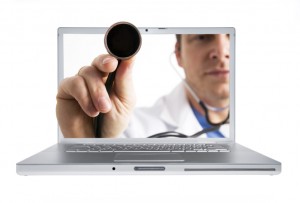Innovation: Ideas That Generate Ideas
I’ve spent the past several days in the Minnesota woods at a client’s executive retreat. The client is a software company that has made a number of acquisitions over the past few years. A good portion of the discussion at the retreat focused on how to build a platform that can: 1) integrate the various acquisitions; 2) deliver a common interface; 3) simplify the support load; 4) provide a foundation for developing new functionality more quickly.
The discussion got me thinking about platforms — innovations that generate innovations. I’ve written a lot about innovation over the past year and especially the role of serendipity and mashup thinking. I’ve generally focused, however, on innovations as an end result. In other words, we adopt certain behaviors and modes of thinking and the result is an innovation. We then repeat the process and (hopefully) get another innovation. Creating the innovation essentially ends the process.
Platform thinking, on the other hand, can lead us to innovations that spawn innovations. As Steven Johnson points out, platforms abound in the natural world. Johnson builds an extended metaphor around the coral reef — a platform for unimaginably rich plant and animal life. Once the process gets started (in an otherwise barren sea), the reef builds a virtuous circle that attracts and facilitates multiple life forms. Part of the secret is collaboration. The CO2 that one animal gives off as waste becomes the building block for another animal’s home. Similarly, oxygen is a waste product for some reef denizens but the lifeblood of others.
In the human world, the Internet is probably the best recent example of a platform. The Internet creates both serendipity (we get to meet lots of people) and mashup thinking (we can easily find lots of new ideas to mash together). The Internet also takes care of a lot of the dirty work of information sharing. Just as the coral reef makes it easy for many animals to find a home, the Internet makes it easy for people like me to create websites and share information. We often hear the metaphor of researchers standing on the shoulders of giants. My website is standing on the shoulders of a very rich (and essentially free) technology stack.
Platform thinking is innovation taken to the next step. We think about how to create something that creates something. I’m generally a proponent of free markets, but Johnson makes as strong argument that the most fundamental platforms come from public agencies. Certainly, the Internet did not come from market-driven competition. Rather, it resulted from the collaboration of many specialists from many disciplines in an open environment. That’s pretty much like a coral reef.
So, what’s the next platform? I’m guessing that it’s a mashup of: 1) the human body, 2) secure communications, and 3) Internet sensors. We already have millions of Internet sensors monitoring the environment — everything from air pressure, to ocean salinity, to volcanic pressures. The next frontier could well be sensing human health conditions. We already have wearable condition monitors. For instance, friends of mine run a small company in Denver called Alcohol Monitoring. They provide a wearable device, with secure communications, that alerts probation officers when one of their wards has been drinking. Within a decade, I’d guess that health condition monitors will migrate from outside the body to inside the body. They’ll provide critical data that can help us foresee — and forestall — health crises. They’ll also provide a platform for a huge wave of new ideas, services, and fortunes. Sounds like a coral reef.
Round the Clock Healthcare — for Free?
When I go on a long bike ride, I usually wear a heart monitor. I like to know how hard my ticker is tocking. I also carry a smartphone with GPS in it. I like to know where I am … and where the nearest hospital is.
Let’s do a little mashup thinking. What if my heart monitor were connected to the phone and GPS? Here’s a scenario: the heart monitor notices that my heart is going haywire. It sends a signal to the phone. The phone uses GPS to locate the nearest hospital, sends an emergency call (perhaps using Amcom Mobile Connect*), along with my location. The hospital dispatches an ambulance to my GPS location to pick me up. It could save my life. And it’s all based on currently available technologies. All we have to do is mash them up.
A few weeks ago I wrote a post about how a strategist might think about healthcare costs. All the experts say that healthcare costs are bound to go up. In my experience, when all the experts point in one direction, it’s always useful to look in the other direction — just to make sure.
Several of my friends let me know that I was wrong — healthcare costs will continue to rise, if for no other reason than the government is involved. That wasn’t really my point. I was merely trying to illustrate strategic thinking. But now I am thinking about healthcare costs and I wonder if new technologies won’t have a huge impact. By and large, many of those technologies are already available. We just need to mash them up.
Here’s a simple example — the HAPIfork, which was introduced at this year’s Consumer Electronic Show (CES). The HAPIfork mashes up a fork, a timer, and (perhaps) an accelerometer to keep track of how fast you’re eating. HAPIfork measures the number of “fork servings per minute” and loads the data to a dashboard on your smartphone. You can keep track of how fast you’re eating. Apparently, eating slowly is better for you. You can adjust your behavior to be healthier.
I don’t think HAPIfork is going to revolutionize healthcare – but it hints at things to come. As the internet of things evolves, we’ll connect more and more sensors to monitor the word around us. We’ll also monitor our health with sensors that can inform us more precisely of our own condition. Am I getting dehydrated? Is my blood pressure up? Do I need to take corrective actions? A connected sensor could also alert my physician to potential trouble. Imagine, for instance, an internet toilet that uses chemical sensors to monitor your, um, output. If something is out of whack it lets you know. If something is really out of whack it lets your physician know.
Could connected healthcare reduce our costs in the long run? The real answer is that nobody knows. But it’s a question worth asking and technology worth pursuing. It’s an “unforeseen” solution that could just prove the experts wrong.
* I consult to Amcom and, yes, this is a shameless attempt to generate publicity for one of my clients.
Sunday Shorts – 5
Some interesting things I spotted this week, whether they were published this week or not.
The Economist asks, will we ever again invent anything that’s as useful as the flush toilet? Is the pace of innovation accelerating or decelerating? And what should we do about it, if anything?
When we think about innovation, we often focus on ideas and creativity. How can we generate more good ideas? But what about the emotional component of innovation? For innovative companies, emotional intelligence may trump technical intelligence. Norbert Alter answers your questions from Paris.
We’re familiar with the platform wars for mobile applications. Will Apple’s iOS become the dominant platform? Or maybe it will be Android from Google? Perhaps it’s some version of Windows? But what if the next great mobile app platform is a Ford or a Chevy? (Click here).
For my friends in Sweden, here’s McKinsey’s take on the future of the Swedish economy. Things are looking up — just don’t rest on your laurels.
Where does America’s R&D money go? Here’s an infographic that shows how the Federal government has invested in research over the past 50 years.
The Greeks had lots of tricks for memorizing things. They could hold huge volumes of information in their heads. But does memory matter anymore? After all, you can always Google it, no? William Klemm writes that there are five reasons why tuning up your memory is still important. And he’s a Texas Aggie so he must be right.
Innovation and Diversity
Do you have an MBA? So do most of the people I work with at my client organizations. One of the ways I add value is merely by the fact that I don’t have an MBA.
It’s not that having an MBA is a bad thing. It’s that so many companies are run by people educated in the same way — they all have MBAs. The fact that I don’t have an MBA doesn’t mean that I think better than they do. But I do think differently. Sometimes that creates problems. Oftentimes, it creates opportunity.
If all your employees think alike, then you limit your opportunity to be creative. Creativity comes from connections. By connecting concepts or ideas in different ways, you can create something entirely new. This works at an individual level as well as an organizational level. If you read only things that you agree with, you merely reinforce existing connections. If you read things that you disagree with, you’ll create new connections. That’s good for your mental health. It’s also good for your creativity.
At the organizational level, connecting new concepts can lead to important innovations. Indeed, the ability to innovate is the strongest argument I know for diversity in the workforce. If you bring together people with different backgrounds and help them form teams, interesting things start to happen.
In this sense, “diversity” includes ethnic, economic, and cultural diversity. It especially includes academic diversity. As a leader, you want your engineers, say, to mix and mingle with your humanities graduates. Perhaps your lit majors could improve your MBAs’ communication skills. Perhaps your philosophers can help you see things in an entirely new light. In today’s world, innovation requires that you bring together insights from multiple disciplines to “mash up” ideas and create new ways of seeing and doing.
Most companies keep data on ethnic diversity within their workforce. However, they don’t usually keep statistics on the different academic specialties represented among their employees. You may well have enough MBAs. But do you have enough linguists? Philosophers? Sociologists? Anthropologists? Artists? If not, it’s time to start recruiting. The result could well be a healthier, more innovative company.
Innovation: What’s Your Risk Profile?
Quick. What’s your risk profile? Do you like to take risks in business? If you do, you’ll probably seek and consume information in very different ways than your colleagues who are more risk averse. That can be a huge obstacle to innovation.
I often ask my clients to self-assess their appetite for risk on a scale of 1 to 6. People who are very averse to risk give themselves a “1”. People who love taking risks give themselves a “6”. In most cases, my clients distribute themselves along a more-or-less normal curve — a few 1s and 6s and many more 3s and 4s. To innovate successfully, you’ll need people in every category. If you have only 1s, you’ll never venture anything. If you have only 6s, you’ll take far too many risks for your own good.
The issue is that people with different risk profiles also have different information needs. That can stifle communication and that, in turn, can stifle innovation. People who are generally risk averse (in a business sense), want much more information than those who are risk oriented. People who are 1s often want very detailed business cases before making a decision. They want to identify every possible risk in the proposed venture and have contingency plans ready. They also like detailed spreadsheets; lots of quantitative data makes them feel comfortable.
Risk-oriented people, on the other hand, are quite comfortable with less information. They believe that it’s impossible to predict the future. A detailed spreadsheet is no better at predicting the future than a rough-and-ready guess. Further, you can’t control every variable. So, why bother creating detailed spreadsheets and exhaustive business plans? You have to dive in and experiment to learn what will work and what won’t.
To innovate successfully, you need both risk-oriented and risk-averse individuals. They see the world differently and that’s good. Your risk-oriented colleagues can help you spot new opportunities. Your risk-averse colleagues can help you avoid stupid mistakes. The trouble is that the two types of colleagues don’t know how to talk to each other effectively. They have different information needs that are very deeply ingrained and will probably never change. As a leader, you’ll need to step in and serve as an interpreter between the two groups. By doing so, you’ll hear both sides, get a balanced view, and pick those innovations that are most likely to work.




